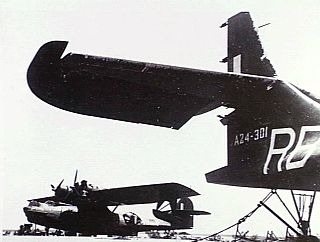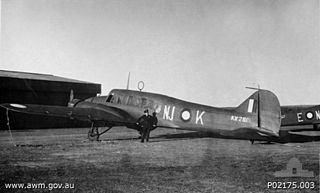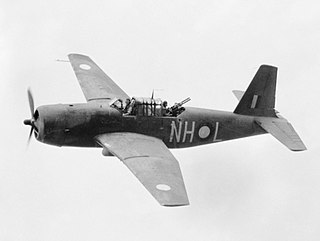
No. 30 Squadron is a squadron of the Royal Australian Air Force (RAAF). Raised in 1942 as a long-range fighter unit, the squadron saw action in the Second World War, serving in the South West Pacific Area against the Japanese and operating mainly in the ground attack and anti-shipping roles from bases in New Guinea and the Netherlands East Indies. After the war, the squadron was disbanded, however, it was re-raised a short time later as a unit of the part-time Citizen Air Force, operating in the target towing and air defence role in New South Wales. In 1960s the squadron ceased flying aircraft and operated surface-to-air missiles, providing for the defence of Sydney and Darwin before disbanding in 1968. The squadron was re-raised again in 2010 and since then it has served as an airbase support squadron located at RAAF Base East Sale.
No. 6 Squadron is a Royal Australian Air Force (RAAF) training and bomber squadron. It was formed in 1917 and served as a training unit based in England during World War I. The squadron was disbanded in 1919 but re-formed at the start of 1939. It subsequently saw combat as a light bomber and maritime patrol squadron during World War II, and took part in the New Guinea Campaign and New Britain Campaign before being disbanded after the war.

No. 84 Squadron was a Royal Australian Air Force (RAAF) fighter squadron of World War II. It was established in February 1943 and was part of the defences of the Torres Strait area from April 1943 until May the next year. After being withdrawn from the Torres Strait the squadron was reduced to a cadre until May 1945, when it began to receive new aircraft. No. 84 Squadron was disbanded in January 1946.

No. 42 Squadron was a Royal Australian Air Force (RAAF) mine laying and maritime patrol squadron of World War II formed in June 1944. It conducted patrol and mine-laying operations over the Netherlands East Indies (NEI) from August 1944 until the war ended a year later. It also conducted operations in the waters off southern China in early 1945. Following the Japanese surrender, the squadron performed transport and reconnaissance flights until it was disbanded in November 1945.

No. 43 Squadron was a Royal Australian Air Force (RAAF) maritime patrol and mine-laying squadron that operated during World War II. Raised in early 1943, the squadron flew Catalina aircraft from bases in Queensland and the Northern Territory, flying mine-laying, convoy-protection and bombing sorties against Japanese targets in the Pacific theatre. These operations saw it operate as far north as the Chinese coast. After the conclusion of hostilities, the squadron was disbanded in mid-1946.

No. 14 Squadron was a Royal Australian Air Force maritime patrol squadron of World War II. It was formed in 1939 and was based in Western Australia throughout the war. While it conducted many patrols over the waters off Western Australia, it did not see combat. The squadron was disbanded in December 1945.

No. 12 Squadron was a Royal Australian Air Force (RAAF) general purpose, bomber and transport squadron. The squadron was formed in 1939 and saw combat in the South West Pacific theatre of World War II. From 1941 to 1943, it mainly conducted maritime patrols off northern Australia. The squadron was based at Merauke in western New Guinea from November 1943 to July 1944, when it was withdrawn from operations. After being re-equipped, it operated as a heavy bomber unit from February 1945 until the end of the war. The squadron continued in this role until it was redesignated No. 1 Squadron RAAF in February 1948. The squadron was reformed in 1973 to operate transport helicopters but was again disbanded in 1989.

No. 66 Squadron was a Royal Australian Air Force (RAAF) maritime patrol squadron of World War II. It was formed in May 1943 as an emergency measure and disbanded in January 1944.

No. 67 Squadron was a Royal Australian Air Force (RAAF) maritime patrol squadron of World War II. It was formed in January 1943, conducted patrols off the southern Australian coastline until the end of the war, and was disbanded in November 1945.

No. 20 Squadron is a Royal Australian Air Force (RAAF) support squadron. Coming under the control of No. 96 Wing, it is responsible for the management of the airfield at RAAF Base Woomera, South Australia. The squadron originated as a maritime patrol unit during World War II. Raised in August 1941, it operated PBY Catalina and Short Empire flying boats from bases in New Guinea, Queensland and the Northern Territory, conducting search-and-rescue, mine-laying, anti-submarine and bombing missions against Japanese targets in the Pacific theatre. Following the conclusion of hostilities, the squadron was disbanded in March 1946. It was reactivated as an airfield support squadron in April 2015.

No. 100 Squadron is a Royal Australian Air Force (RAAF) historic aircraft display squadron. It was originally formed as a bomber and maritime patrol squadron that operated during World War II. Raised in early 1942 from the remnants of a British unit that had been destroyed in Malaya, the squadron flew Bristol Beauforts from bases in Queensland and New Guinea, undertaking torpedo- and level-bombing sorties against Japanese targets in the Pacific theatre. Following the conclusion of hostilities, the squadron was disbanded in August 1946. It was reformed as the Air Force Heritage Squadron in January 2021 to operate airworthy warbirds.

No. 93 Squadron was a Royal Australian Air Force fighter squadron that operated during World War II. It was formed in January 1945 and disbanded in August 1946. Due to delays in bringing operational airfields into service, the squadron saw little combat before the end of the war.

No. 22 Squadron is a Royal Australian Air Force (RAAF) mixed Permanent and Reserve squadron that provides support for the RAAF in the Sydney region. Formed in 1936, the squadron served in Papua New Guinea during the Second World War, and later followed the Pacific War as far as the Philippines. Following the war, the squadron was re-formed in 1948 but was converted to a non-flying support role in mid-1960. It is currently based at RAAF Base Richmond, New South Wales.

No. 71 Squadron was a Royal Australian Air Force (RAAF) maritime patrol squadron of World War II. It was formed in January 1943 and conducted patrols off the east coast of Australia until it was disbanded in August 1944.

No. 73 Squadron was a Royal Australian Air Force (RAAF) maritime patrol squadron of World War II. It was formed in July 1942 and conducted patrols off the east coast of Australia until July 1944. The squadron was disbanded in September 1944.

No. 78 Squadron was a Royal Australian Air Force (RAAF) fighter squadron of World War II. It was formed in July 1943 as part of expansion of the RAAF's fighter force, and was assigned to mobile striking forces for the duration of the war.

No. 7 Squadron was an Australian flying training squadron of World War I and medium bomber squadron of World War II. The squadron was formed in England in October 1917 as part of the Australian Flying Corps, and disbanded in early 1919. It was re-formed by the Royal Australian Air Force on paper in June 1940, and operationally in January 1942. After seeing action during the Pacific War flying Lockheed Hudson and, later, DAP Beaufort bombers, the squadron was disbanded a second time in December 1945.

No. 80 Squadron was a Royal Australian Air Force (RAAF) fighter squadron that operated during World War II. The squadron was formed in September 1943 and was disbanded in July 1946 after seeing action in the South West Pacific Theatre of the war.

Western Area Command was one of several geographically based commands raised by the Royal Australian Air Force (RAAF) during World War II. It was formed in January 1941, and controlled RAAF units located in Western Australia. Headquartered in Perth, Western Area Command was responsible for air defence, aerial reconnaissance and protection of the sea lanes within its boundaries. Its aircraft conducted anti-submarine operations throughout the war, and attacked targets in the Dutch East Indies during the Borneo campaign in 1945.

The Royal Australian Air Force (RAAF) operated Vultee Vengeance dive bombers during World War II. The Australian Government ordered 297 of the type in late 1941 as part of efforts to expand the RAAF. This order was later increased to 400 aircraft. A few Vengeances arrived in Australia during 1942, and large-scale deliveries commenced in early 1943; further orders were cancelled in 1944 after 342 had been delivered.



















